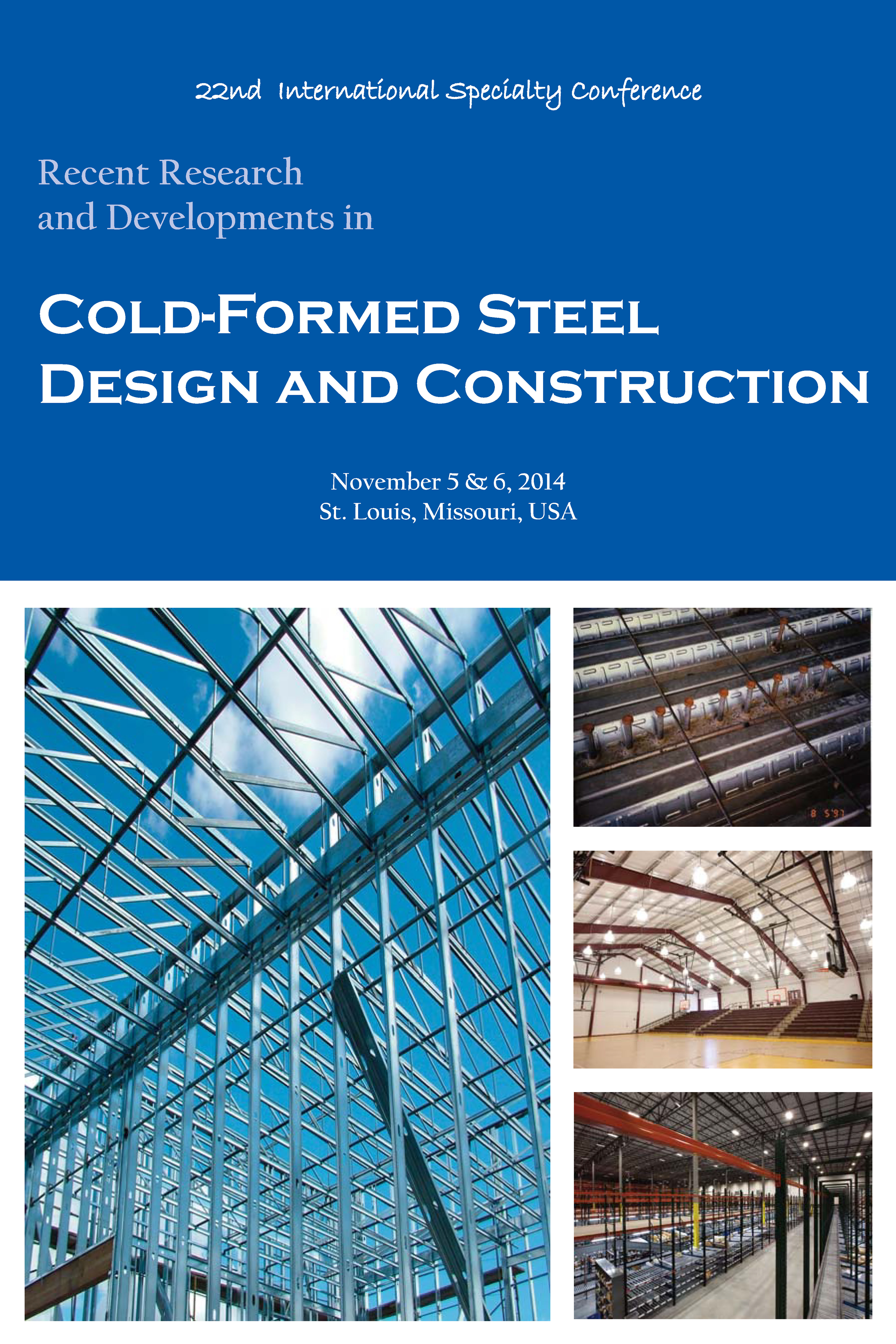Session Dates
05 Nov 2014
Abstract
Cold-formed structural C-section members may be subjected to axial force, bending and shear or combinations of either two or all of these actions. Design methods for these sections are normally specified in the Australian/New Zealand Standard for Cold-Formed Steel Structures (AS/NZS 4600:2005) or the North American Specification for Cold-Formed Steel Structural Members (2012). Both Effective Width Methods (EWM) and the newly developed Direct Strength Method (DSM) can be used for the design. For shear, the NAS S100 2012 Edition has recently included DSM design rules just for the plain sections only. To date, no rules are presented in this specification for DSM in shear for sections with holes. This paper presents a testing program performed at the University of Sydney to determine the ultimate strength of high strength cold-formed C-sections with square web cut-outs. Tests were conducted on typical lipped channel sections with central square holes of varying sizes. Three different sizes of the square holes were chosen for testing. Numerical simulations using the Finite Element Method (FEM) were also performed. The simulations are compared with and calibrated against tests. The accurate results from FEM allowed extension of the test data by varying the hole sizes. The results of both the experimental tests and FEM were used and plotted on the DSM shear design curves. As required by the DSM method, the shear buckling load Vcr for the whole channel sections with holes was computed using the Spline Finite Strip Method. The proposals for an extension to the DSM in shear for channel sections with square holes are given in the paper.
Department(s)
Civil, Architectural and Environmental Engineering
Research Center/Lab(s)
Wei-Wen Yu Center for Cold-Formed Steel Structures
Sponsor(s)
Australian Research Council
Meeting Name
22nd International Specialty Conference on Cold-Formed Steel Structures
Publisher
Missouri University of Science and Technology
Document Version
Final Version
Rights
© 2014 Missouri University of Science and Technology, All rights reserved.
Document Type
Article - Conference proceedings
File Type
text
Language
English
Recommended Citation
Pham, Cao Hung; Chin, Yu Han; Boutros, Peter; and Hancock, Gregory J., "The Behaviour of Cold-Formed C-Sections with Square Holes in Shear" (2014). CCFSS Proceedings of International Specialty Conference on Cold-Formed Steel Structures (1971 - 2018). 6.
https://scholarsmine.mst.edu/isccss/22iccfss/session03/6
The Behaviour of Cold-Formed C-Sections with Square Holes in Shear
Cold-formed structural C-section members may be subjected to axial force, bending and shear or combinations of either two or all of these actions. Design methods for these sections are normally specified in the Australian/New Zealand Standard for Cold-Formed Steel Structures (AS/NZS 4600:2005) or the North American Specification for Cold-Formed Steel Structural Members (2012). Both Effective Width Methods (EWM) and the newly developed Direct Strength Method (DSM) can be used for the design. For shear, the NAS S100 2012 Edition has recently included DSM design rules just for the plain sections only. To date, no rules are presented in this specification for DSM in shear for sections with holes. This paper presents a testing program performed at the University of Sydney to determine the ultimate strength of high strength cold-formed C-sections with square web cut-outs. Tests were conducted on typical lipped channel sections with central square holes of varying sizes. Three different sizes of the square holes were chosen for testing. Numerical simulations using the Finite Element Method (FEM) were also performed. The simulations are compared with and calibrated against tests. The accurate results from FEM allowed extension of the test data by varying the hole sizes. The results of both the experimental tests and FEM were used and plotted on the DSM shear design curves. As required by the DSM method, the shear buckling load Vcr for the whole channel sections with holes was computed using the Spline Finite Strip Method. The proposals for an extension to the DSM in shear for channel sections with square holes are given in the paper.




Comments
Funding provided by the Australian Research Council Discovery Project Grant DP110103948 has been used to perform this project.